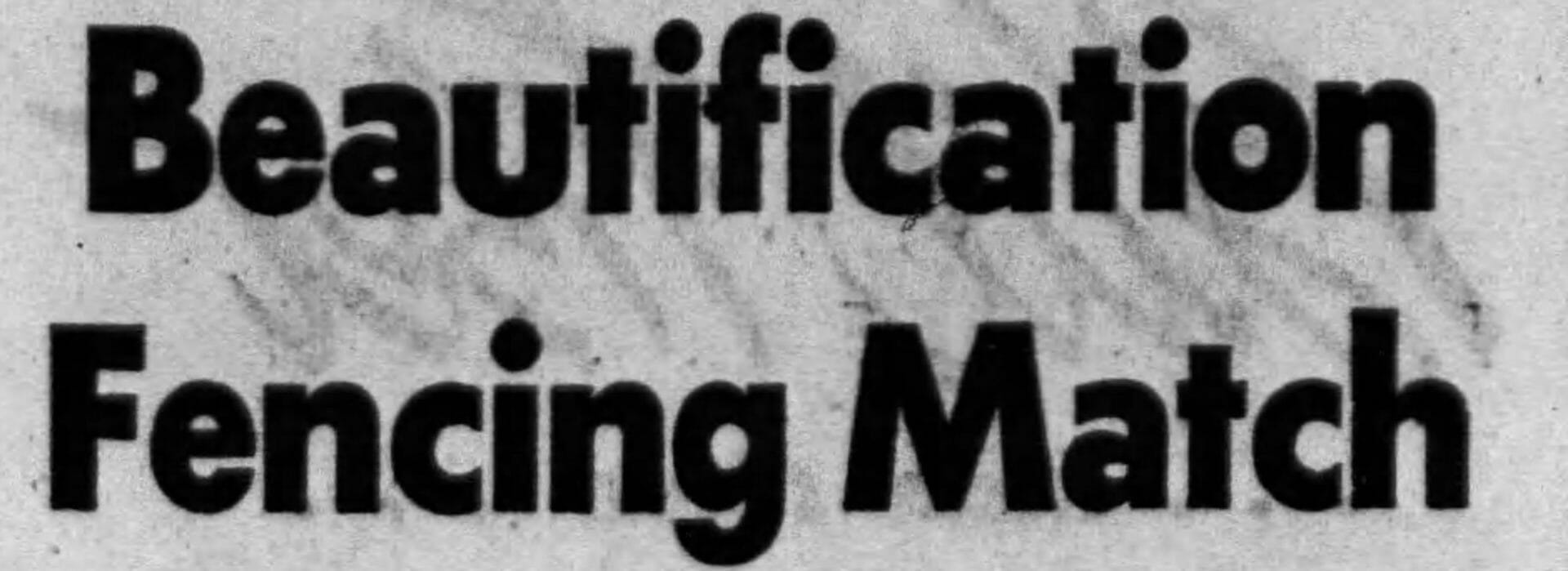In June 1965, the Oakland Housing Authority (OHA) began a “Beautification Program.”
Under the housing authority’s plan, fenced-in yards were to be removed and replaced with turfed areas in the following projects:
According to the tenants of the Peralta Villa housing projects in West Oakland, they first heard about the program when the group of boys from the Alameda County Central Labor Council (funded by a grant from the War on Poverty) started demolishing the backyard fences and flower gardens.
The fences were removed, Housing Authority officials say, as the first step in a program of “beautification”
The tenants were irate because some had paid the OHA for the fences and planted their gardens. No advance notice was given – the workers just started tearing everything up.
They Organize

The War on Poverty ran into a major obstacle this week – the War on Poverty”
Oakland Tribune June 30, 1965
As a part of the War on Poverty, a work-study program was funded to provide the salaries of University of California students to work with the tenants.
The students worked with the residents of Lockwood Gardens to help them develop a sense of community identity and to learn how to help themselves.
These students encouraged the tenants to form the Lockwood Improvement League.
The War on Poverty funded the program, the same people supporting the “Beautification Program” and removing their fences.
The tenants of Peralta Villas met at Cole School and formed the Peralta Improvement League. Thirty tenants volunteered to create their own “human fence” They wrote up a list of demands and began their fight to save their gardens.
- Stop tearing down the remaining fences.
- Rebuild the fences already taken down
- Reimburse the tenants whose private property was destroyed
- Consult the tenants first before doing any further work

The labor for the “Beautification Program” was provided by the Alameda County Labor Council through a grant from the War of Poverty.
Lockwood Gardens
On June 25, 1965, the OHA decided to “beautify” the projects. They started with Lockwood Gardens.
The people of Lockwood Gardens newfound sense of community identity was outraged.
Each thirty-plus units in Lockwood Gardens had a yard, and most had fences. Some had lawns, and some had shrubs and flowers.
The enclosed yards gave the tenants a sense of individuality, security, and pride.
All backyard fences would come out; the lawns, shrubs, and flowers would be dug out. A common turf area without fences would replace private yards.

They had been using my yard as adverstiment for years.”
Jim Sorenson 1137 65th Ave – Oakland Tribune
Jim Sorenson 1137 65th Ave – Oakland Tribune

They were also upset by the lack of warning. They got 200 signatures in favor of keeping the fences.
The Lockwood Gardens tenants were all for beautification but not at the expense of their backyards. One tenant was upset because he had just rebuilt his fence. Not all the tenants of the tenants took care of yards or kept their fences in repair. But they felt the OHA could work it out with those tenants.
The Protests


The tenants of both Peralta Villa and Lockwood Gardens protested and managed to halt or limit the work that could be done at either of the projects.

The OHA laid out a new backyard fence policy.
“Residents must keep their backyards neat and in repair; no new fences could be installed; no satisfactory fence will be torn down now, but eventual elimination of all fenced areas can be expected.”
In August of 1965, the OHA board voted to poll each family of Campbell Village, Lockwood Gardens, and Peralta Villa if they want a fence. Everyone was to be asked, even those who lived on the 2nd floor. There was a total of 916 total units in the three projects.
The tenants were given two choices in the questions asked :

“It appears to be a lower-the-cost- maintenance program”
The Pro-Fence group leader
In July 1966, one tenant reported that all the fences had been removed, and the place looked like a dump. The lawn was dead in most areas as it wasn’t being watered.
More Info
- Program Stumbles on Its Own Results – Oakland Tribune June 30, 1965
- Battle of Backyard Fences on New Front – Oakland Tribune July 02, 1965
- Battle of Backyard Fences – Pg 2 – Oakland Tribune July 02, 1965
- Peralta Villa Folk in Fence Victory – Oakland Tribune July 04, 1965
- Back Fence War Halts in Standoff – Oakland Tribune July 12, 1965
- Back Fence War Halts in Standoff Pg. 2 – Oakland Tribune July 12, 1965
- New Tactics Ease Backyard Fence War – Oakland Tribune July 13, 1965
- Anti-Poverty War Needs Tighter Control – Oakland Tribune Aug 01, 1965
- Pro-Fence Forces Get Poll on the Issue – Oakland Tribune Aug 10, 1965
- Battle of the Backyard Fences Pg 1 – Oakland Tribune Sep 01, 1965
- Battle of the Backyard Fences Pg 2 – Oakland Tribune Sep 01, 1965
- Beautification Fencing Match – Oakland Tribune July 13, 1966







































































